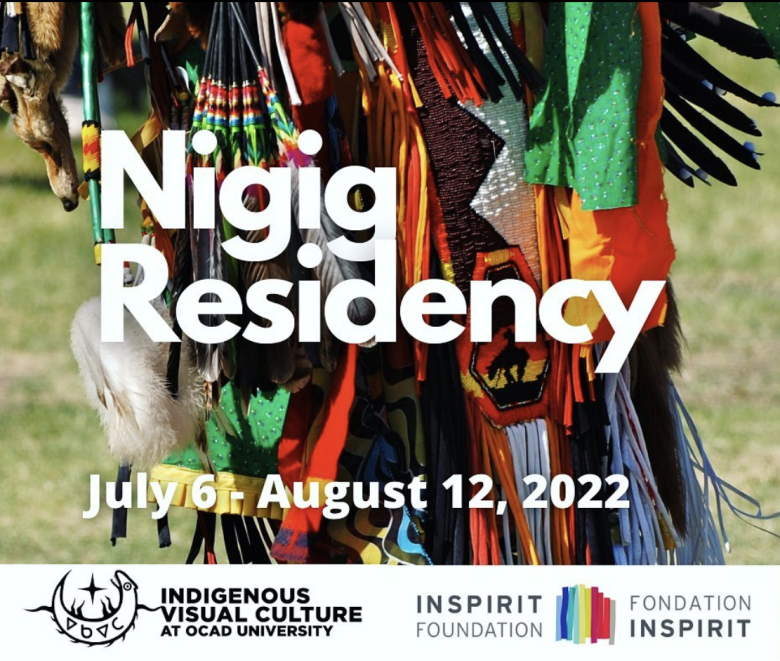
Indigenous technologies are at the centre of this summer’s Nigig Residency
The Nigig Residency, hosted by the Indigenous Visual Culture (INVC) program at OCAD University has returned in person! This summer, the initiative features a range of workshop instructors rather than spotlighting one specific artist as in years previous.
Video and performance artist Vanessa Dion Fletcher, textile artist and OCAD U alum Justine Woods and traditional drummer Steve Teekens are offering hands on learning opportunities to the community as part of this year’s residency programming. Many of the sessions so far have been held outside amidst the gorgeous backdrop of the new Jordan Bennett mural which stretches across the south wall of 100 McCaul St. and was revealed last month.
Fletcher is a Lenape and Potawatomi neurodiverse artist who employs porcupine quills, Wampum belts and menstrual blood in her practice to reveal the complexities of what defines a body physically and culturally. She is coordinating this year’s roster of workshops, which are available to students, non-students and faculty from July 6 to August 22. Fletcher is also the instructor of INVC 1001: Materials & Methods, which is the for-credit course that OCAD U students are taking concurrently with the Nigig Residency.
Since the summer residency began Fletcher has led a series of beading sessions on Wednesdays and Fridays from 12 to 3 p.m. Participants have been provided with a beading kit that, with support from Fletcher, will result in a unique pair of earrings for each workshop attendee.
Last week, 2021 OCAD U Interdisciplinary Art, Media and Design graduate Justine Woods led a moccasin fabrication workshop, which guided participants through the process of drafting a pattern. Woods is a garment designer who integrates Indigenous fashion technologies into her beaded and leather works.
Steve Teekens will lead participants through a hands on rattle making workshop this week. Rattles are culturally and spiritually important to many Indigenous nations. In addition to rattle fabrication Teekens will offer attendees the teachings that accompany them.
Nigig (ᓂᑭᒃ᙮) means otter in Ojibwe. Though the significance of the animal varies across Anishinaabe communities it frequently symbolizes the role of a messenger or mediator. For Delaney Chair of the INVC program Susan Blight the residency is about connecting and re-connecting through making, cultural expression, sharing and carrying Indigenous ways of knowing and being into the future.
“The residency program offers a space to bring together students in INVC with community members who do not attend OCAD U to learn and make. We hope to create a space for collaborative learning about Indigenous technologies,” Assistant Professor Blight notes.
Since 2015, the Nigig Visiting Artist Residency has supported the dynamism located in Indigenous contemporary art and design practices and is a tremendous educational opportunity for artist facilitators and students. The residency is designed to empower Indigenous students to tell their own stories and gain technical skills they can employ to mentor, create and build vibrant, successful careers.
The initiative is made possible through grant funding from the Inspirit Foundation, a Canadian non-profit organization founded in 2012 that promotes inclusion and pluralism through media and art and supports young leaders.
More about the Indigenous Visual Culture program at OCAD University
INVC honours the creative traditions of First Nations, Métis and Inuit art and design practices. The program combines practice-specific and interdisciplinary studio-based learning and courses in the visual, cultural, social and political history of Indigenous peoples.